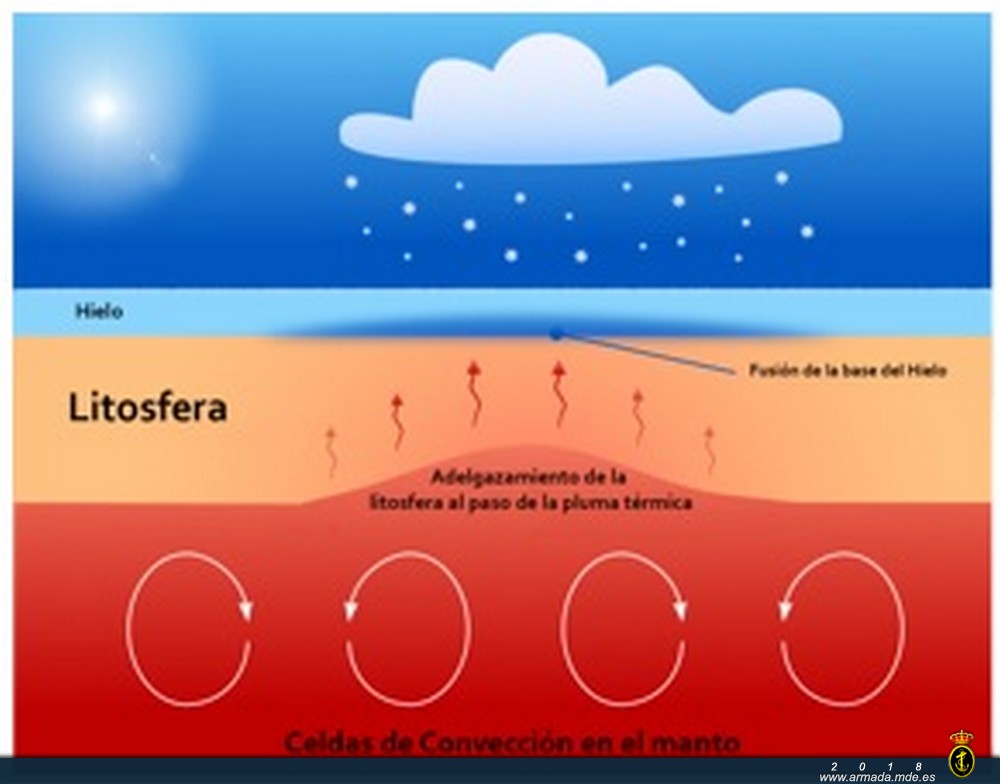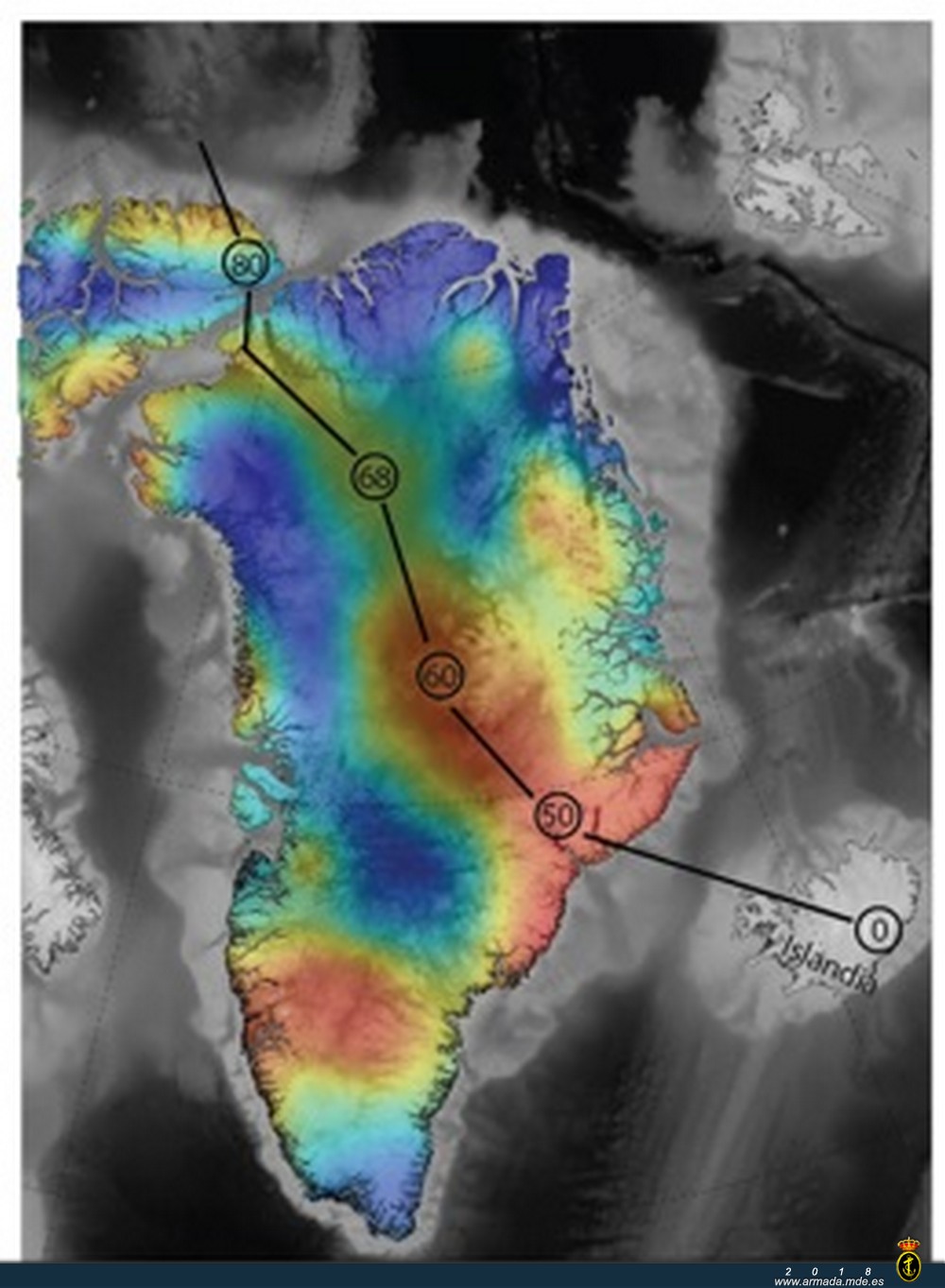NASA and the Spanish Navy publish scientific studies on the heated geologic past of Greenland.
Friday, August 03, 2018
A recent research project conducted by Dr. Yasmina Martos, a planetary scientist at NASA's Goddard Space Flight Center in Maryland, along with other researchers like a Spanish Navy officer from the Royal Observatory, unearthed available magnetic field, gravity and other geologic information for clues about the amount and distribution of heat beneath Greenland. The studies resulted in a heat map exposing a thermal track beneath Greenland that records the movement of a continent through Earth’s history as can be seen in NASA’s website.
By mapping the heat escaping from below the Greenland Ice Sheet, a NASA scientist and her team sharpened our understanding of the dynamics that dominate and shape terrestrial planets. The research team mapped the geothermal heat flux, or rate of heat escape, in Greenland. Their models showed regional variations, plus a path of heat along a peculiar route from the northwest to the southeast of the island.
The team suggests the scar was created as the tectonic plate, which includes Greenland, moved through the millennia over a mantle plume (or thermal anomaly) that is active below the lithosphere. The lithosphere is Earth’s outer layer; it includes the crust and upper part of the mantle. This plume is a channel of hot rock that starts hundreds of kilometers below the surface. It rises through the mantle and reaches the bottom of the lithosphere. The heat is then transported up through the lithosphere and alters its chemical composition, which thickens the crust.
A similar plume formed the Hawaiian Islands and is currently fueling the Kīlauea volcano eruptions. The Hawaiian chain of islands and seamounts that were created when the Pacific Plate moved over the plume in the middle of the Pacific Ocean is a visible representation of the type of scar beneath Greenland.
These thermal anomalies or plumes are one of several geothermal heat-transporting phenomena on Earth; their number is uncertain, but scientists think there could be as many as 20. Otherwise, the inner planet is heated evenly throughout by decaying radioactive elements in Earth’s top layers. There's also primordial warmth left over from the formation of our planet 4.5 billion years ago, and from the meteorites that pummeled it. The team considered these heat sources, but ruled out their role in producing the scar because they would have formed a uniform heat pattern across Greenland.
Measuring heat without touching the surface
Because Greenland is covered by an ice sheet that is up to 1.8 miles (3 kilometers) thick in the center, getting physical samples from the ground below the ice is nearly as difficult as getting them from the Moon. Remotely sensed data offers virtually the only window to Greenland's subsurface dynamics.
Martos's team decided to look at magnetic field information collected by magnetometers, instruments flown by airplanes that measure the strength of the magnetic field of Earth. The data revealed anomalies in the magnetism of rocks below Greenland.
The team also used gravity data to model the features of the lithosphere and confirm the plume’s effect on crustal thickness.
These modeling tools will help scientists to better understand the effect of below-surface heat on things like melt or breakage at the base of ice sheets and glaciers on Earth. It will also help them study remote locations on Earth and other rocky bodies in our solar system.




 + 1
+ 1

